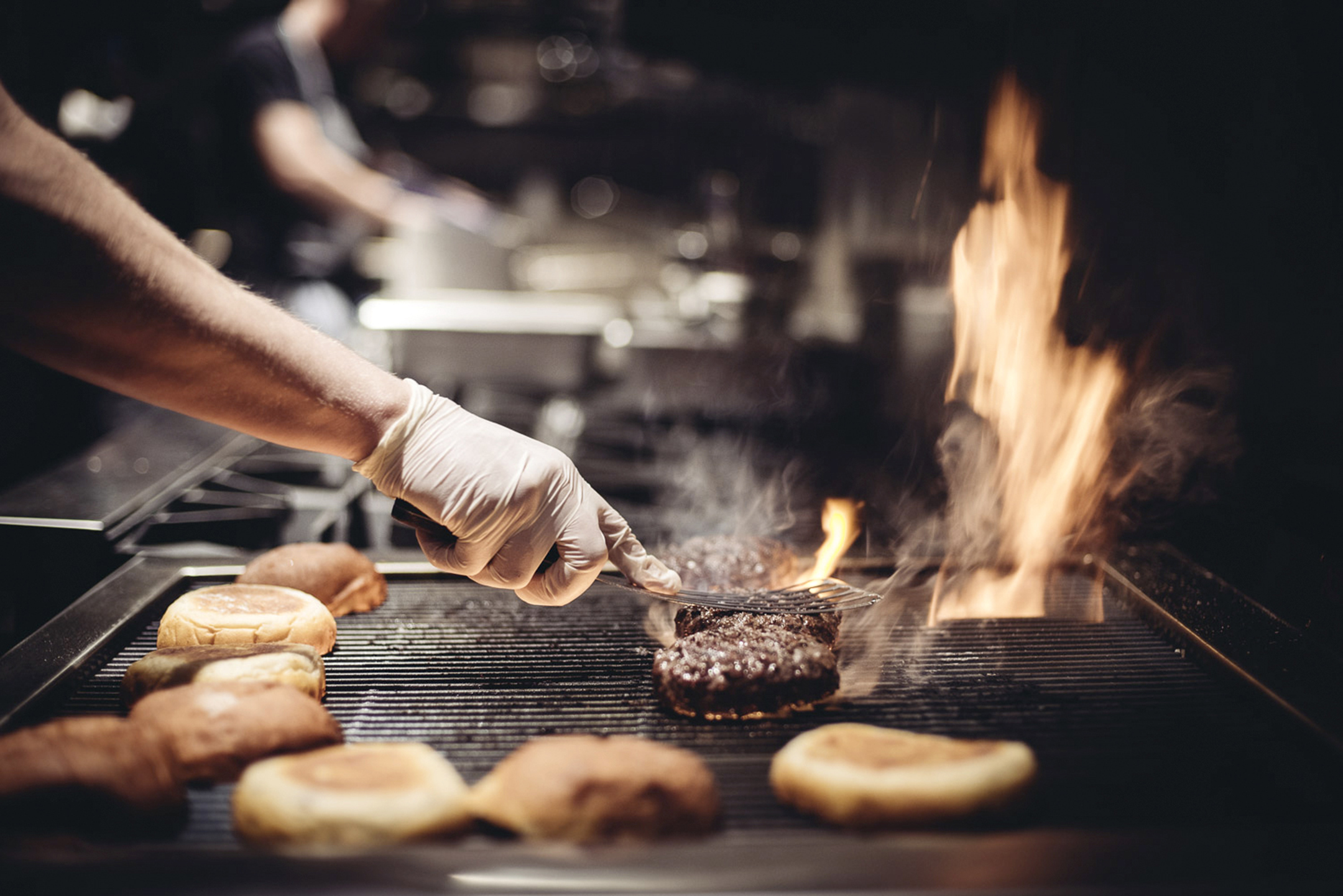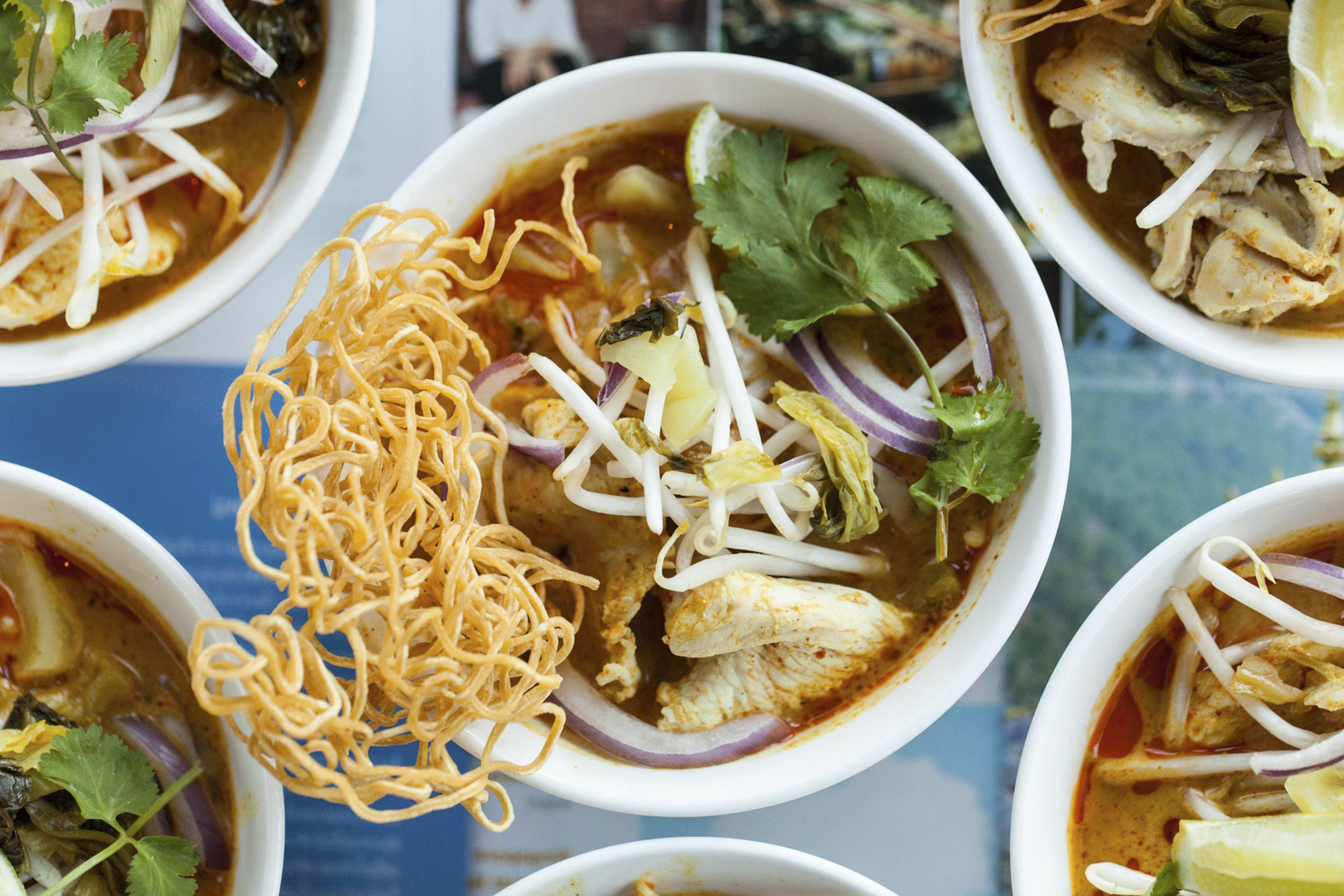Never before have chefs been so invested in every element of their plates. With access to amazing, increasingly varied product, the proliferation of foraging, and an embrace of global flavors, every last ingredient in a dish is a force of its own. Here, five of Seattle’s favorite chefs share the ingredients they’re most excited about right now—from vinegar “mothers” brought back from Vietnam to a fish sauce that wars have been fought over.
Jason Wilson, Chef/Partner of Crush and Miller’s Guild
Photos by Joshua Bessex
Jason Wilson is excited about crosnes (pronounced “crone”), which taste “almost like a sweet, radish-like turnip.” He first came across the tiny tubers at the Santa Monica Farmers Market, but hasn’t been able to find them locally—though that means he’s the only one in Seattle using the vegetable, which is native to Asia and kind of looks, perhaps unfortunately, like a cross between a chunk of ginger and a grub. In his restaurants, Wilson uses the ingredient in various ways, including slow-cooking them in butter and salt until tender, pickling crosnes, or even just eating them raw in their natural form, which he says is “delicious.” If you manage to get your hands on any of the unsung roots (they can be found online at earthlydelights.com), Wilson suggests frying them in tempura batter or adding them to soups, salads, and vegetable dishes, as he’s done in the gorgeous dish pictured at top. “It’s a unique ingredient, and you can have fun finding uses for this uncommon root.” (Honest-food.net suggests sauteing them with peas, garlic, parsley, and lemon, and says to “look to the Chinese and French for inspiration,” as they are crosnes’ largest consumers.)
Sam Crannell, Chef/Owner of LloydMartin
Photos by Joshua Bessex
Over at the perpetually popular LloydMartin in Queen Anne, Crannell is currently playing around with golden needles, also known as “gum yum”—which are the unopened buds of a day lily. He was introduced to them by one of the restaurant’s “house” foragers from California. What’s most appealing about the ingredient, according to Crannell, is that it’s “very exotic-smelling and tasting, and incredibly floral when it’s fresh-picked and used in a salad or saute. But it is also really nice pickled. Most of its flower notes are tamed, and it lends a unique sweetness.” At Lloyd-Martin, he pickles the flowers in ramp pickle liquid and uses them on crudo in fall and winter. “Then we use them fresh in late summer in salads with fresh-cut herbs, as a garnish for fish and shellfish, to infuse vegetable broths for soups, to make vinaigrettes for poultry, and for use in pestos and muddled in drinks.”
The ingredient is traditionally used in Chinese cooking, and dried versions of it (which can be reconstituted) can be found in the International District. If you want to try them at home, Crannell advises adding the needles to a stir fry, a salad, or a noodle soup, as a broth for fish, or in pesto. They’re also pretty easy to incorporate into salads.
Jason Stoneburner, Chef/Partner of Stoneburner and Executive Chef of Bastille Cafe & Bar
Photos by Joshua Bessex
Jason Stoneburner has been using colatura, an amber-colored anchovy extract made by fermenting anchovies, for years at home. Packed with umami, it has a fish-forward flavor—in a good, oily fish-lover’s way. While he didn’t feel like the ingredient made sense with the dishes at Bastille, when “I opened Stoneburner, which has Italian influences, the wheels started turning on how to heighten dishes with it. I like the depth that it lends dishes. It has this rich, funky, briny note that contributes massive amounts of flavor without adding weight to the dish.” To that end, he uses it in various pasta dishes, vinaigrettes, and condiments. The colatura-heightened condiments are usually spooned over grilled vegetables and meats. “Its history is really quite amazing; it dates back to ancient Rome, 3rd century B.C. Known as garum, it was reported to have divided social and economical classes based on its varying quality alone.” He says your best bet for finding it is at Marx Foods at 144 Western Ave W, and recommends the following preparations: heirloom tomatoes with olive oil, garlic, lime, and colatura; grilled asparagus or zucchini with olive oil, pistachio, lemon, mint, and colatura; or a simple pasta dish with olive oil, parsley, chili, garlic, and colatura.
Eric Banh, Chef/Owner of Monsoon, Monsoon East and Ba Bar
Photos by Joshua Bessex
Banh is in the midst of a fascinating experiment: raising a few live vinegar “mothers” brought back from Vietnam by a friend. These slimy-looking things consist of acetic-acid bacteria and cellulose, which are a natural product of the vinegar-making process (like a mother yeast in bread). “Many families cultivated these vinegar ‘mothers’ back in Vietnam. In the old days in Saigon, you couldn’t just buy a jug of vinegar. You’d bring a small container to the grocery store, and the owner would give you a scoop or two from a jar,” says Banh. “As a kid in Vietnam, I raised one for fun. They kind of look like jellyfish. They start to move and grow, and you have to cover them in the summertime because they attract vinegar flies.” Of late, he’s had two of them floating in a glass jar in a warm, dark room for weeks—after having been drenched in pure coconut water. Why go to the trouble? “So many cuisines use vinegar, yet no one puts much emphasis on it, or its quality. The flavor—which we refer to as tawa—is so much deeper, unlike regular distilled vinegar, which is sharp and too sour. I’ve been using champagne vinegar or Japanese rice wine in my restaurants as an alternative because they’re better quality, but they’re expensive. As far as I know, I’m the only chef in Seattle using these vinegar mothers.” What’s he doing with the first batch? “I’m just using them on salads to really showcase the flavor, since we won’t have enough to use in everything. Eventually, I’ll use them to pickle vegetables like mustard greens, carrots, daikons, and small green tomatoes. And we’ll use them in our nuoc cham, of course!”
Meeru Dhalwala, Chef/Co-owner of Shanik
Photos by Kyu Han
Over in South Lake Union, Dhalwala is grinding bitter melon (also known as bitter gourd) into her own spice mixture, like a garam masala—or as she calls it, “a Meeru masala.” The chef grew up eating the melon in India, where it’s highly regarded for its health benefits: purifying the blood and helping to reduce blood-sugar levels. “Its bitterness is an acquired taste for non-Indians, but many Indians love to spice it up and enjoy its punch on the palate. In northern India we marinate it in salt to soften the flavor a bit, and then cook the bitter melon with lots of strong spices,” she says. “I grew up with a dad who loves strong, spicy, and bitter and a mom who loves spicy and soft. So for dinner we would often have lentil curry (soft) with spicy okra or bitter gourd (bitter). As a child I obviously liked the softer curries, but my parents always made us try a little of everything that was for dinner. As my palate matured, so did my love of the bitter touch within an overall soft meal.” Her masala is 80 percent ground bitter gourd with ground cumin and cayenne, which she uses in all sorts of curries. “One popular dish is red bell peppers, eggplant, and paneer sauteed in tons of onions, tomatoes, and bitter-gourd masala.” While most Indian grocers carry frozen bitter gourd, Dhalwala says fresh is best. (I saw it fresh at Uwajimaya just last month.)
nsprinkle@seattleweekly.com








